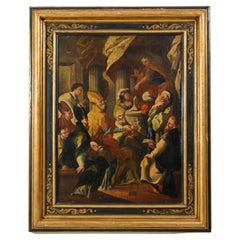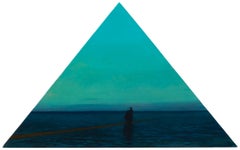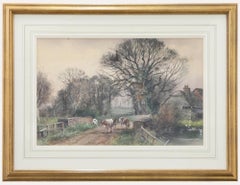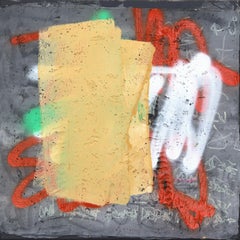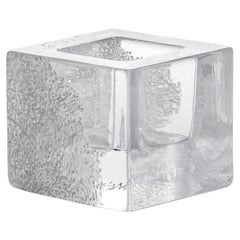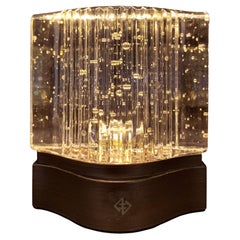The Brick
to
297
1,917
955
1,373
1,318
734
564
432
383
276
206
163
134
128
86
76
72
69
69
69
64
63
57
53
41
37
36
28
16
15
13
13
13
9
8
5
5
5
3
3
3
2
2
2
2
1
1
1
1
1
1
44
42
37
35
33
Sort By
18th Century, Italian painting with Saint Nicholas and the miracle of the brick
Located in IT
18th Century, Italian painting with Saint Nicholas and the miracle of the brick
Oil on canvas
Category
Antique 18th Century Italian Baroque Paintings
Materials
Canvas
$17,310
H 53.55 in W 42.92 in D 3.55 in
"Me and you walking on the brick path" surrealistic seascape, mother & daughter
By Daniela Astone
Located in Sag Harbor, NY
"Me and you walking on the brick path" is a glowing oil painting surrealistic seascape with mother
Category
21st Century and Contemporary Surrealist Landscape Paintings
Materials
Oil, Panel, Wood Panel
$14,500
H 38.5 in W 61.5 in D 1 in
Framed 20th Century Watercolour - Cattle Over the Brick Bridge
Located in Corsham, GB
A charming farming scene in watercolour, depicting cattle crossing a brick bridge with farm
Category
20th Century Landscape Drawings and Watercolors
Materials
Watercolor
$296 Sale Price
20% Off
H 21.07 in W 27.96 in
The Brick Walls 3 - Original Textural Abstract Energetic Artwork on Canvas
Located in Los Angeles, CA
This large textural energetic abstract figurative artwork on canvas by Togolese artist Olympio is a unique mixed media painting with a raw and direct aesthetic, providing an unfilter...
Category
21st Century and Contemporary Contemporary Abstract Paintings
Materials
Canvas, Oil Pastel, Mixed Media, Acrylic
Kosta Boda Brick Votive White
By Anna Ehrner
Located in Wilkes Barre, PA
The Brick votive from Kosta Boda has a square shape inspired by something so simple: a brick. Its
Category
21st Century and Contemporary Turkish More Candle Holders
Materials
Crystal
Kosta Boda Brick Votive Black
By Anna Ehrner
Located in Wilkes Barre, PA
The Brick votive from Kosta Boda has a square shape inspired by something so simple: a brick. Its
Category
21st Century and Contemporary Turkish More Candle Holders
Materials
Crystal
Kosta Boda Brick Votive Blue
By Anna Ehrner
Located in Wilkes Barre, PA
The Brick votive from Kosta Boda has a square shape inspired by something so simple: a brick. Its
Category
21st Century and Contemporary Turkish More Candle Holders
Materials
Crystal
Brick, Wooden Cabinet Shaped like Block of Brick and Metal Girder Base
By Clan Milano
Located in Barlassina, Monza-Brianza
.
The Brick, the first step to develop any construction became a piece of any design-lover.
Solid
Category
2010s Italian Modern Cabinets
Materials
Metal
$21,816 / item
H 49.02 in W 41.15 in D 22.05 in
The Crystal Brick Portable LED Lamp in Glass and Bronze By André Fu Living
By André Fu
Located in Admiralty, HK
inspired by the classic glass brick, a symbol of modernist architecture in the 1960s, this crystal
Category
2010s Chinese Table Lamps
Materials
Bronze
$618 / item
H 5.12 in W 4.73 in D 2.76 in
Workstead Brick III in Glazed White
By Workstead
Located in Floyd, VA
The BRICK III is a modern interpretation of the classic vanity sconce, celebrating the dialogue
Category
2010s American Wall Lights and Sconces
Materials
Earthenware
Workstead Brick I in Glazed White
By Workstead
Located in Floyd, VA
The BRICK I is a modern interpretation of the classic vanity light, celebrating the dialogue
Category
2010s American Wall Lights and Sconces
Materials
Earthenware
Pair of Wood & Brick Red Fabric 1960 Armchair by S. Saporiti for F.Lli Saporiti
By Fratelli Saporiti, Sergio and Giorgio Saporiti
Located in Varese, Lombardia
on the legs. The Brick Red fabric and the fillings remain in pretty good condition.
Category
Vintage 1960s Italian Mid-Century Modern Armchairs
Materials
Fabric, Wood
$4,297 / set
H 29.53 in W 33.47 in D 33.47 in
Contemporary Handcrafted Cabinet, by Leo Strauss Brick Cabinet
By Leo Strauss
Located in Atibaia, BR
In the plenitude of timelessness, the Bar Brick is inspired in the bricks facades worldwide. The
Category
2010s Brazilian Modern Cabinets
Materials
Hardwood, Plywood
$6,400 Sale Price / item
69% Off
H 62.99 in W 47.24 in D 19.68 in
Brick Floor Lamp by Idaaf Architects
Located in Geneve, CH
Brick Floor Lamp by Idaaf Architects
Dimensions: L 30 x W 30 x H 165cm
Material: Walnut, Aluminum
Category
2010s Georgian Post-Modern More Candle Holders
Materials
Wood
Gervasoni Brick Chair in Grey Rawhide Seat with Chrome Frame by Paola Navone
By Gervasoni, Paola Navone
Located in Brooklyn, NY
The Brick 23 chair without armrests has a structure in polished chromed steel rod. Light lines and
Category
21st Century and Contemporary Italian Modern Chairs
Materials
Chrome
$923 Sale Price / item
15% Off
H 33.47 in W 18.51 in D 20.08 in
Robert Lee Morris Matte Gold Plated Brass Beveled 1x2 Brick bracelet
By Robert Lee Morris
Located in New York, NY
Morris and Donna Karan during the height of the 1980's. Inspired by the brick-lay construction (using
Category
Vintage 1980s American Modern Link Bracelets
Materials
Gold Plate, Brass
$2,200
H 1.2 in W 1.2 in D 0.25 in Dm 3 in L 7.5 in
CINCHES (SPALLED BRICK) - industrial reductive minimalist sculpture, orange
Located in Signal Mountain, TN
This piece consists of pieces of spalled brick, which had crumbled from the artist's chimney. The
Category
2010s Minimalist Sculptures
Materials
Brick, Chalk
$405
H 3 in W 3 in D 4.5 in
XXI Century Italian Sterling decorative brick-shaped box
By Arval Argenti Valenza
Located in VALENZA, IT
Sterling silver box in the shape of a perforated brick.
The box was made entirely by hand starting
Category
2010s Italian Other Decorative Boxes
Materials
Sterling Silver
Murano Strong Violet Glass and Brass Console Wall Mirror, 2019
Located in Rome, IT
housed. The frame of the mirror is made up of a series of bricks, positioned one next to the other. The
Category
2010s Italian Mid-Century Modern Wall Mirrors
Materials
Brass
Gervasoni Round Brick Table in Waxed Iron Top with Natural Base by Paola Navone
By Gervasoni, Paola Navone
Located in Brooklyn, NY
A strong and distinctive sign characterises the Brick 32/33/34/36 family of tables. Nordic
Category
21st Century and Contemporary Italian Modern Tables
Materials
Iron
$4,556 Sale Price / item
15% Off
H 29.14 in Dm 47.25 in
Murano Gold Art Glass and Brass Mid-Century Italian Console Wall Mirror, 2000
Located in Rome, IT
series of bricks, positioned next to each other. The bricks are made of gold-colored Murano glass, and
Category
Early 2000s Italian Mid-Century Modern Wall Mirrors
Materials
Brass
$4,775 / item
H 27.56 in W 27.56 in D 1.97 in
Murano Aqua Green Art Glass and Brass Italian Console Wall Mirror, 2000
Located in Rome, IT
of a series of bricks, positioned next to each other. The bricks are made of aqua green Murano glass
Category
Early 2000s Italian Mid-Century Modern Pier Mirrors and Console Mirrors
Materials
Brass
$4,775 / item
H 27.56 in W 27.56 in D 1.97 in
Murano Pink Art Glass and Brass Mid-Century Italian Console Wall Mirror, 2000
Located in Rome, IT
bricks, positioned next to each other. The bricks are made of pink Murano glass, and the back of the
Category
Early 2000s Italian Mid-Century Modern Wall Mirrors
Materials
Brass
$4,775 / item
H 27.56 in W 27.56 in D 1.97 in
Gervasoni Large Brick Table in Waxed Iron Top with Natural Base by Paola Navone
By Paola Navone, Gervasoni
Located in Brooklyn, NY
A strong and distinctive sign characterises the Brick 32/33/34/36 family of tables. Nordic
Category
21st Century and Contemporary Italian Modern Tables
Materials
Iron
$7,873 Sale Price / item
15% Off
H 29.14 in W 94.49 in D 39.38 in
IL POUF Graphic Brick
By LO DECOR
Located in Carimate, Lombardia
color on the seats in the brick, mustard and green lines. The black fringes that outline the round
Category
2010s Italian Modern Ottomans and Poufs
Materials
Velvet
Murano Art Glass and Brass Italian Mid-Century Console / Wall Mirror, 2000
Located in Rome, IT
glass is housed. The frame of the mirror is made up of a series of bricks, positioned one next to the
Category
Early 2000s Italian Mid-Century Modern Wall Mirrors
Materials
Brass
$5,730 / item
H 48.82 in W 33.86 in D 2.76 in
Contemporary Side Table with Antique Italian Red Brick Top and Custom Iron Base
Located in Atlanta, GA
A contemporary side table made of an Italian antique red brick from the early 20th century with
Category
21st Century and Contemporary Italian Side Tables
Materials
Iron
$2,350
H 22.25 in W 10.25 in D 10.25 in
Murano Dove-Gray Color Glass and Brass Wall Mirror / Consol Mirror, 1990
Located in Rome, IT
color Murano glass is housed. The frame of the mirror is made up of a series of bricks, positioned one
Category
1990s Italian Mid-Century Modern Wall Mirrors
Materials
Brass
$5,133 / item
H 47.25 in W 29.53 in D 1.58 in
ClassiCon White Limited Edition Brick Screen by Eileen Gray
By Eileen Gray
Located in New York, NY
flat 139 cm
BRICK
SCREEN
Designer, Version
Designer, Ausführung
Product
Produkt
Folding screen
Category
21st Century and Contemporary German Modern Screens and Room Dividers
Materials
Stainless Steel
$96,841 / item
H 73.63 in W 45.28 in D 9.45 in
Gervasoni Brick Side Chair in Calcare Upholstery with Black Lacquered Base
By Gervasoni, Paola Navone
Located in Brooklyn, NY
Nordic suggestions and industrial touches give life to the Brick 221/223 family of chairs. With a
Category
21st Century and Contemporary Italian Modern Side Chairs
Materials
Upholstery
$1,288 Sale Price / item
15% Off
H 31.11 in W 21.66 in D 19.69 in
Gervasoni Brick Side Chair in Azzurro Upholstery with Black Lacquered Base
By Paola Navone, Gervasoni
Located in Brooklyn, NY
Nordic suggestions and industrial touches give life to the Brick 221/223 family of chairs. With a
Category
21st Century and Contemporary Italian Modern Side Chairs
Materials
Upholstery
$1,288 Sale Price / item
15% Off
H 32.68 in W 18.12 in D 19.69 in
Murano Amber/Fume' Color Glass and Brass Mid-Century Wall Mirror, 2000
Located in Rome, IT
of the mirror is made up of a series of bricks, positioned one next to the other. The bricks are made
Category
Early 2000s Italian Mid-Century Modern Wall Mirrors
Materials
Brass
$5,372 / item
H 47.25 in W 31.5 in D 2.76 in
Murano Silver Color Glass and Brass Mid-Century Wall Mirror, 2000
Located in Rome, IT
mirror is made up of a series of bricks, positioned one next to the other. The bricks are made of Murano
Category
Early 2000s Italian Mid-Century Modern Wall Mirrors
Materials
Brass
$5,372 / item
H 47.25 in W 31.5 in D 2.76 in
Murano Gold Color Glass and Brass Mid-Century Wall Mirror, 2000
Located in Rome, IT
mirror is made up of a series of bricks, positioned one next to the other. The bricks are made of Murano
Category
Early 2000s Italian Mid-Century Modern Wall Mirrors
Materials
Brass
$5,372 / item
H 47.25 in W 31.5 in D 2.76 in
Murano Amber/Fume' Color Glass and Brass Mid-Century Wall Mirror, 2000
Located in Rome, IT
of the mirror is made up of a series of bricks, positioned one next to the other. The bricks are made
Category
Early 2000s Italian Mid-Century Modern Pier Mirrors and Console Mirrors
Materials
Brass
$5,372 / item
H 47.25 in W 31.5 in D 1.97 in
Murano Gold Color Glass and Brass Mid-Century Wall Mirror, 2000
Located in Rome, IT
mirror is made up of a series of bricks, positioned one next to the other. The bricks are made of Murano
Category
Early 2000s Italian Mid-Century Modern Wall Mirrors
Materials
Brass
$5,372 / item
H 47.25 in W 31.5 in D 1.97 in
Murano Teal Color Glass and Brass Mid-Century Wall Mirror, 2000
Located in Rome, IT
the mirror is made up of a series of bricks, positioned one next to the other. The bricks are made of
Category
Early 2000s Italian Mid-Century Modern Wall Mirrors
Materials
Brass
$5,372 / item
H 47.25 in W 31.5 in D 1.97 in
Nathan Sawaya - Dark Gray Beneath the Surface 1, Sculpture
By Nathan Sawaya
Located in Greenwich, CT
unlikely things. His global touring exhibitions, THE ART OF THE BRICK, feature large-scale sculptures using
Category
2010s Contemporary Figurative Sculptures
Materials
Plastic
Price Upon Request
H 18 in W 14 in D 18 in
Murano Red Color Glass and Brass Mid-Century Console / Wall Mirror, 2000
Located in Rome, IT
the mirror is made up of a series of bricks, positioned one next to the other. The bricks are made of
Category
Early 2000s Italian Mid-Century Modern Wall Mirrors
Materials
Brass
$5,372 / item
H 47.25 in W 31.5 in D 1.97 in
Murano Gold Color Glass and Brass Mid-Century Console / Wall Mirror, 2000
Located in Rome, IT
the mirror is made up of a series of bricks, positioned one next to the other. The bricks are made of
Category
Early 2000s Italian Mid-Century Modern Wall Mirrors
Materials
Mirror, Murano Glass, Wood
$5,372 / item
H 47.25 in W 31.5 in D 1.97 in
Murano Blu Color Glass and Brass Mid-Century Console / Wall Mirror, 2020
Located in Rome, IT
the mirror is made up of a series of bricks, positioned one next to the other. The bricks are made of
Category
2010s Italian Mid-Century Modern Wall Mirrors
Materials
Brass
$5,372 / item
H 39.38 in W 27.56 in D 1.97 in
Gervasoni Brick 223 Chair in Ombra Upholstery with Natural Lacquered Walnut Base
By Paola Navone, Gervasoni
Located in Brooklyn, NY
Nordic suggestions and industrial touches give life to the Brick 221/223 family of chairs. With a
Category
21st Century and Contemporary Italian Modern Chairs
Materials
Upholstery
$1,216 Sale Price / item
15% Off
H 32.68 in W 18.12 in D 19.69 in
Gervasoni Brick Side Chair in Seal Recto Upholstery with White Lacquered Base
By Paola Navone, Gervasoni
Located in Brooklyn, NY
Nordic suggestions and industrial touches give life to the Brick 221/223 family of chairs. With a
Category
21st Century and Contemporary Italian Modern Side Chairs
Materials
Upholstery
$1,288 Sale Price / item
15% Off
H 31.11 in W 21.66 in D 19.69 in
Gervasoni Brick 221 Chair in Ombra Upholstery with Natural Lacquered Walnut Base
By Paola Navone, Gervasoni
Located in Brooklyn, NY
Nordic suggestions and industrial touches give life to the Brick 221/223 family of chairs. With a
Category
21st Century and Contemporary Italian Modern Chairs
Materials
Upholstery
$1,165 Sale Price / item
15% Off
H 31.11 in W 21.66 in D 19.69 in
Red Brick Building Facade Street Scene in New York City by Mitchell Funk
By Mitchell Funk
Located in Miami, FL
Late light skims off the brick facade of a historic red brick building in Manhattan. Street
Category
1990s Abstract Abstract Photography
Materials
Archival Ink, Archival Paper, Archival Pigment
20th Century Sterling Silver Box Tower Shape with Rooster at the Top
By Arval Argenti Valenza
Located in VALENZA, IT
reproducing the bricks on the body and the windows are embossed and chiseled in the lantern. The tower is
Category
1990s Italian Other Sterling Silver
Materials
Sterling Silver
$2,282 Sale Price
20% Off
H 12.21 in Dm 3.15 in
ClassiCon Limited Edition Brick Screen in Black or White by Eileen Gray
By Eileen Gray
Located in New York, NY
flat 139 cm
BRICK
SCREEN
Designer, Version
Designer, Ausführung
Product
Produkt
Folding screen
Category
21st Century and Contemporary German Modern Screens and Room Dividers
Materials
Stainless Steel
$96,841 / item
H 73.63 in W 45.28 in D 9.45 in
original 1927 poster for the french state railroad - Chinon Ruines du chateau
Located in PARIS, FR
Chinon castle, the brick of a deep purple in the dark night light. Chinon Castle is a castle located on
Category
1920s Prints and Multiples
Materials
Lithograph, Paper
Germaine Lavalleyoriginal 1927 poster for the french state railroad - Chinon Ruines du chateau, 1927
$1,671
H 41.34 in W 29.53 in
Italian Black Lacquered Lounge Chairs with Leather Cushioning
Located in Dallas, TX
These 1940s armchairs fit perfectly as a pair of parlour or reading lounge chairs. The brick brown
Category
Vintage 1940s Italian Lounge Chairs
Materials
Leather, Lacquer
Ali Acerol Brick and Mortar Pattern Chairs and Table Sculptures
Located in New York, NY
Ali Acerol (1948-2007) Brick and Mortar Pattern Chairs and Table Sculptures.
Chairs: 22.75 H x
Category
1990s Modern Patio and Garden Furniture
Materials
Cement
Price Upon Request
H 22.75 in W 17.25 in D 23.5 in
Mid-20th Century Persian Ardebil Throw Rug
Located in New York, NY
A wool pile of symmetric knots on a cotton foundation. The brick-colored field features eight
Category
Mid-20th Century Persian Rustic Persian Rugs
Materials
Wool
Puppet Show, Folk Art Lithograph by Ari Gradus
By Ari Gradus
Located in Long Island City, NY
, Edition: AP, Size: 22 in. x 30 in. (55.88 cm x 76.2 cm), Description: Located on the brick street
Category
1980s Folk Art Landscape Prints
Materials
Lithograph
Brick by Estudio Rafael Freyre
Located in Geneve, CH
BRICK by Estudio Rafael Freyre
Dimensions: W 12.5 D 9 x H 23 cm
Materials: Andes Stones
Also
Category
2010s Peruvian Modern Sculptures and Carvings
Materials
Stone
Brick by Estudio Rafael Freyre
Located in Geneve, CH
BRICK by Estudio Rafael Freyre
Dimensions: W 12.5 D 9 x H 23 cm
Materials: Andes Stones
Also
Category
2010s Peruvian Modern Sculptures and Carvings
Materials
Stone
Brick by Estudio Rafael Freyre
Located in Geneve, CH
BRICK by Estudio Rafael Freyre
Dimensions: W 12.5 D 9 x H 23 cm
Materials: Andes Stones
Also
Category
2010s Peruvian Modern Sculptures and Carvings
Materials
Stone
Brick by Estudio Rafael Freyre
Located in Geneve, CH
Brick by Estudio Rafael Freyre
Dimensions: W 12.5 D 9 x H 23 cm
Materials: Andes Stones
Also
Category
2010s Peruvian Modern Sculptures and Carvings
Materials
Stone
Brick by Estudio Rafael Freyre
Located in Geneve, CH
Brick by Estudio Rafael Freyre.
Dimensions: W 12.5 D 9 x H 23 cm.
Materials: andes stones
Also
Category
2010s Peruvian Modern Sculptures and Carvings
Materials
Stone
Brick by Estudio Rafael Freyre
Located in Geneve, CH
Brick by Estudio Rafael Freyre.
Dimensions: W 12.5 D 9 x H 23 cm.
Materials: andes stones.
Also
Category
2010s Peruvian Modern Sculptures and Carvings
Materials
Stone
- 1
- ...
Get Updated with New Arrivals
Save "The Brick", and we’ll notify you when there are new listings in this category.
The Brick For Sale on 1stDibs
You are likely to find exactly the the brick you’re looking for on 1stDibs, as there is a broad range for sale. There are many Contemporary, Abstract and Street Art versions of these works for sale. Finding the perfect the brick may mean sifting through those created during different time periods — you can find an early version that dates to the 20th Century and a newer variation that were made as recently as the 21st Century. If you’re looking to add a the brick to create new energy in an otherwise neutral space in your home, you can find a work on 1stDibs that features elements of black, brown, gray, gold and more. A the brick from Angela China, Stanley Bleifeld, Richard Combes, Floyd Elzinga and Alexander Farnham — each of whom created distinctive versions of this kind of work — is worth considering. These artworks were handmade with extraordinary care, with artists most often working in paint, oil paint and metal.
How Much is a The Brick?
The price for a the brick in our collection starts at $795 and tops out at $24,000 with the average selling for $6,327.
More Ways To Browse
Python Bag
Bags Python Leather
Bottega Veneta Black Leather Bag
Bottega Veneta Suede
Bottega Veneta Bag Suede
Bottega Veneta Tote Black
Bottega Veneta Intrecciato Tote Bag
Bottega Veneta Tote Bag Black
Bottega Veneta Python
Bottega Veneta Python Bag
Blue And White Porcelain Sink
Boar Pitcher
Bow Kakiemon
Brown Wood Framed Qing Dynasty Portraits
Carstens Uffrecht
Chantilly Serving Pieces
Copper Pig
Dania Lamp
